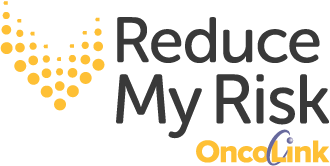The New Year is a great time to make healthy changes – start the year off with a new attitude, pledge to get more activity, eat better or do something to better yourself. Since we spend all day talking about cancer, we decided to kick off the new year with the goal of helping you learn about cancer risk and what you can do to reduce your risk. This blog series will focus on some common risk factors and attempt to bust some myths and help you see ways to improve your health and reduce your cancer risk. In part 4 we will look at HPV and how this contributes to cancer risk.
Just in case you haven’t kept up with the research, the Human Papilloma Virus – or HPV for short – has been charged with some serious crimes. This common sexually transmitted infection was once thought to be responsible for most cases of cervical cancer. Fast forward to today and the list of crimes has increased. HPV is now known to cause most cancers of the cervix, vagina, vulva, and penis. It also causes many cancers of the anus and mouth (most often the tongue, tonsils, uvula, or oral cavity) and the percentage of these cancers that are caused by HPV is on the rise.

The first HPV vaccine was approved in 2006. It was recommended to be given to girls at a young age, before they become sexually active and are exposed to HPV. Things have come a long way in 12 years. Two more HPV vaccines have been approved and the recommendations expanded to include boys. It doesn’t take a rocket scientist to see that girls are only half the equation and you can’t hope to eliminate a virus if half the population is still carrying it.
In 2018, the Food & Drug Administration approved one of the HPV vaccines for use in women and men up to age 45. Research has found that it can prevent pre-cancerous changes caused by HPV, even when the vaccine is given later in life. Think of all the anxiety and procedures related to abnormal pap results that could be avoided if HPV wasn’t so common!
What all this translates to is an overall reduction in infection rates and fewer cases of HPV related cancers. Now that’s progress! You can learn more about HPV and cancer risk on OncoLink.

Want to learn more about your risk factors and reducing your cancer risk? Take the Reduce My Risk survey!
Carolyn Vachani is an oncology advanced practice nurse and the Managing Editor at OncoLink. She has worked in many areas of oncology including BMT, clinical research, radiation therapy and staff development. She serves as the project leader in the development and maintenance of the OncoLife Survivorship Care Plan and has a strong interest in oncology survivorship care. She enjoys discussing just about any cancer topic, as well as gardening, cooking and, of course, her sons.
Hello mrs Vachani.
I have read a lot about the benefits of using Ganoderma Lucidum in patients with cancer.
I have read also your article about this.
My wife is about to start chemotherapy and i would like to know where i can buy original products of this.
Hi Mr. Mosfilos – Please talk with your pharmacist before taking Reishi mushrooms or supplements as they can interfere with some chemotherapy medications. Unfortunately, I do not know where you can buy these products.
This article has some good information that might be helpful: http://www.ascopost.com/issues/august-10-2018/reishi-mushroom/
Research has found that it can prevent pre-cancerous changes caused by the vaccine even when given later in life.”
This might be a typo?